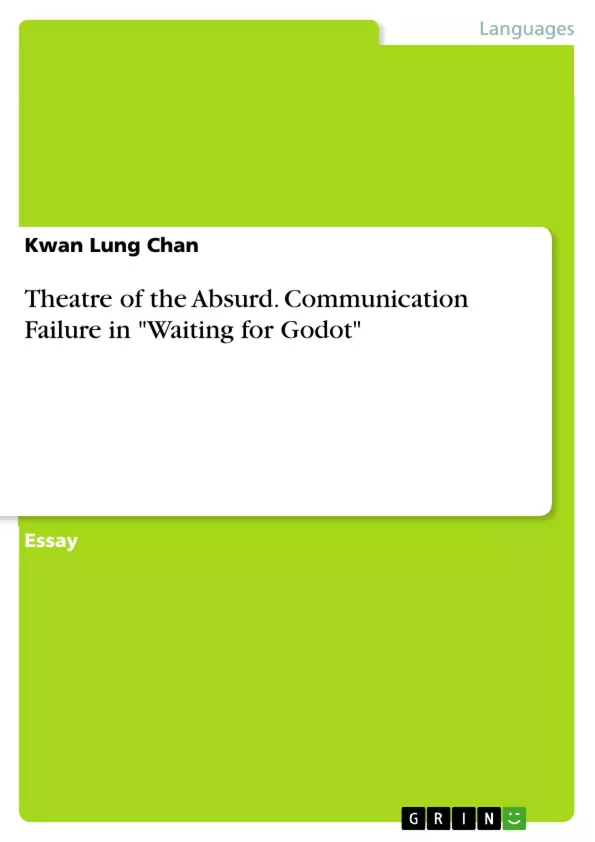This essay will use a famous play "Waiting for Godot" to illustrate how absurdist characteristics are used in the theatre of the absurd, how each of these absurdist characteristics are related to the audience in real life, as well as the meanings behind each of these absurdist characteristics that the theatre of the absurd wants to convey.
Table of Contents
- Ambiguity in Meaning
- Lack of Why
- Lack of What
- Failure of Communication
- Repetition and Loss of Memory
Objectives and Key Themes
This essay explores the characteristics of the theatre of the absurd, specifically ambiguity in meaning and failure of communication, using Samuel Beckett's play Waiting for Godot as an example. The essay analyzes how these characteristics are presented in the play, how they relate to the audience's real-life experiences, and the meanings conveyed through them. Ultimately, it aims to demonstrate the validity of Esslin's assertion about the theatre of the absurd.
- Ambiguity in Meaning
- Failure of Communication
- The Absurdity of Everyday Life
- The Limits of Understanding
- The Importance of the Scattered Bits
Chapter Summaries
The essay begins by defining ambiguity in meaning as a prominent feature of the theatre of the absurd, manifested through a lack of reasons or essential information. The play Waiting for Godot is used as a prime example of this, highlighting the unclear identities of characters, the undefined setting, and the ambiguous central plot. It then explores how this ambiguity reflects the real-life experiences of the audience, where we often find ourselves confronted with unknowns and limited perspectives.
The essay moves on to discuss failure of communication as another key characteristic of the theatre of the absurd, exemplified through the play's use of repetition and loss of memory. The repetitive questioning about Pozzo's bags, despite experiencing communication failures each time, highlights the inadequacy of communication in the play. The essay then connects this to the audience's own experiences of communication breakdowns, showcasing how even with repeated attempts, certain individuals remain challenging to understand.
The essay concludes by drawing parallels between the play's absurd elements and the absurdities of everyday life. It argues that the exaggerated portrayals of ambiguity and communication failure in the play ultimately reflect the truths of our existence, bringing the audience face-to-face with the irrational aspects of their own lives.
Keywords
The key words and focus topics of this essay include the theatre of the absurd, ambiguity, communication failure, Waiting for Godot, Samuel Beckett, Esslin, real life, and the irrational side of existence.
- Citation du texte
- Bachelor of Education (Music) Kwan Lung Chan (Auteur), 2016, Theatre of the Absurd. Communication Failure in "Waiting for Godot", Munich, GRIN Verlag, https://www.grin.com/document/448216



